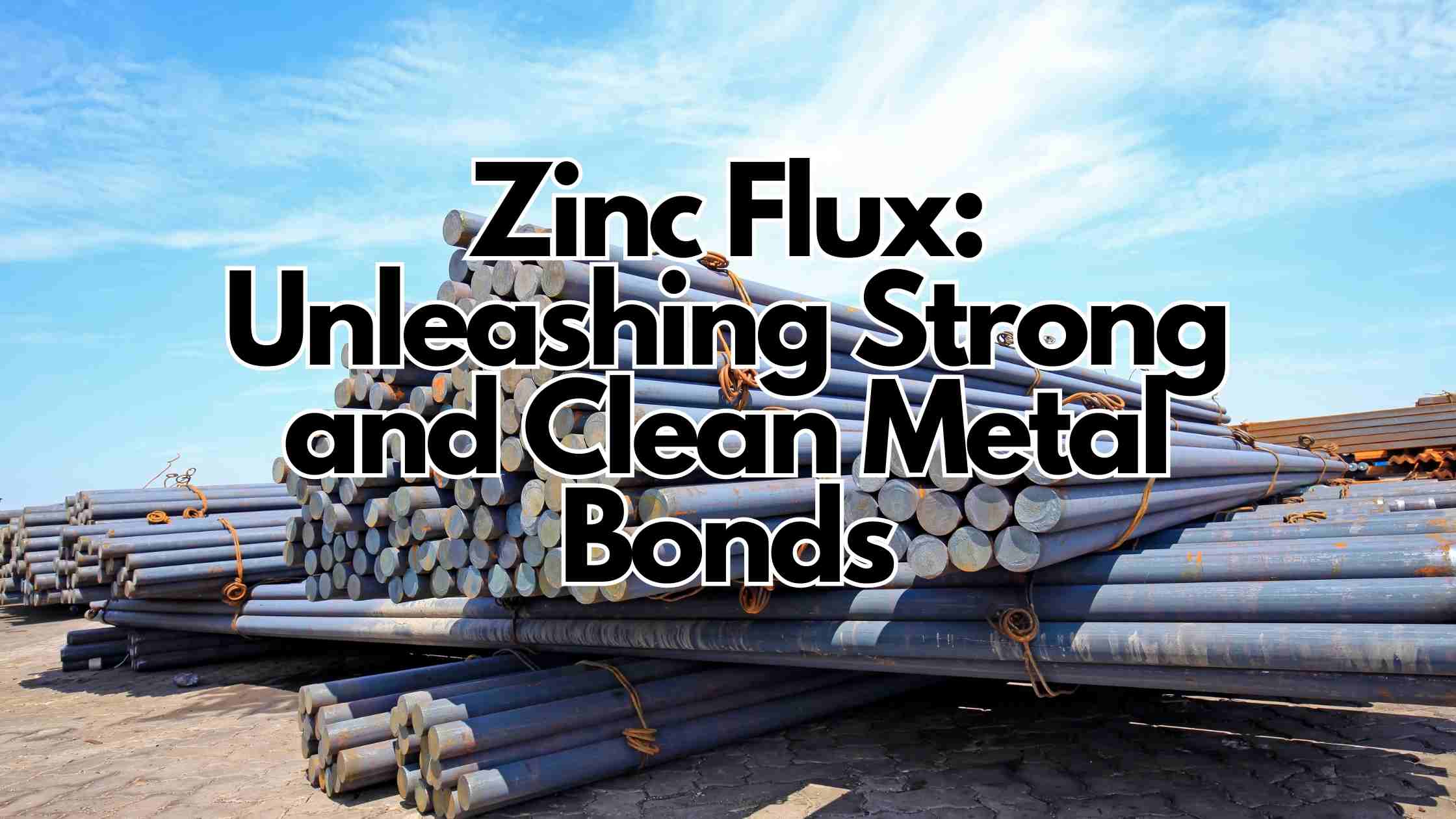
Introduction
Metal bonding plays a crucial role in various industries, ranging from construction and automotive to electronics and manufacturing. To achieve strong and clean bonds, the use of suitable flux is essential. Among the different types of flux available, zinc flux has emerged as a popular choice due to its exceptional properties and numerous advantages. In this article, we will explore the world of zinc flux and how it contributes to unleashing strong and clean metal bonds.
Understanding Zinc Flux
Zinc flux is a compound typically composed of zinc chloride and ammonium chloride. It acts as a cleaning and protective agent during the metal bonding process. When heated, zinc flux undergoes a chemical reaction, producing zinc vapor that removes impurities and oxides from the metal surfaces. This results in improved wetting and spreading properties, allowing for better bond formation.
Advantages of Zinc Flux
Using zinc flux offers several advantages when it comes to metal bonding:
- Enhanced Wetting and Spreading: Zinc flux promotes the spreadability of molten metal, ensuring a more complete bond and minimizing weak spots.
- Oxide Reduction: The high reactivity of zinc in the flux aids in reducing oxide layers on metal surfaces. This helps establish a clean and conducive environment for bonding.
- Corrosion and Oxidation Prevention: Zinc flux forms a protective layer on metal surfaces, guarding against corrosion and oxidation during the bonding process. This contributes to the longevity and durability of the metal bonds.
Applications of Zinc Flux
Zinc flux finds applications in various metal bonding processes, including:
- Welding: In welding applications, zinc flux aids in creating strong welds by promoting fusion between the base metal and the filler material. It helps achieve clean joints by removing contaminants and ensuring proper wetting.
- Soldering: Zinc flux is commonly used in soldering applications to facilitate the bonding of components. It ensures the formation of clean and reliable joints by removing oxides and promoting solder flow.
- Brazing: Zinc flux assists in brazing processes by cleaning the metal surfaces and enabling capillary action. This allows the molten filler metal to flow and create robust bonds between the joined parts.
Best Practices for Using Zinc Flux
To maximize the effectiveness of zinc flux, it is important to follow these best practices:
- Surface Preparation: Clean and prepare the metal surfaces by removing any dirt, grease, or oxides before applying the zinc flux.
- Proper Application: Apply the zinc flux evenly and sparingly to the desired areas, ensuring adequate coverage for effective bonding.
- Safety Precautions: When working with zinc flux, follow safety guidelines, including proper ventilation and the use of personal protective equipment (PPE), as some flux formulations may emit fumes.
Case Studies and Examples
Numerous industries have benefited from the use of zinc flux in achieving strong and clean metal bonds. For instance:
- In the automotive industry, zinc flux has improved the quality and durability of welds in car body assemblies, enhancing overall safety.
- Electronics manufacturers rely on zinc flux to create precise and reliable solder joints, ensuring proper connections in circuit boards and electronic components.
Future Developments and Innovations
Continuous research and development efforts are focused on advancing zinc flux technology. Researchers are exploring new formulations and techniques to further enhance its performance in metal bonding processes. The goal is to achieve even stronger bonds, reduce process time, and minimize environmental impact.
Conclusion
Zinc flux plays a pivotal role in unleashing strong and clean metal bonds across various industries. Its unique properties, such as enhanced wetting, oxide reduction, and corrosion prevention, contribute to improved bonding quality and durability. By understanding the significance of zinc flux and implementing best practices, industries can ensure optimal metal bonding results.
As technology advances and demands for stronger and more reliable metal bonds increase, zinc flux continues to evolve. Ongoing research and development efforts aim to refine its composition, effectiveness, and environmental impact. This opens the door for future innovations and improvements in metal bonding processes.
